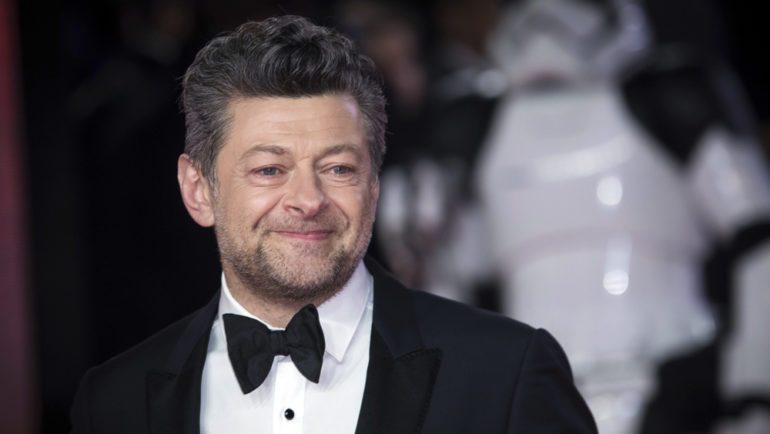‘Mowgli’ Director Andy Serkis on Netflix Sale, Mo-Cap Magic and ‘Rub and Tug’ Debate
By Matt Donnelly
LOS ANGELES (Variety.com) – Andy Serkis has played a hobbit, a monstrous gorilla and a lovable bear. This week, though, he traded his motion capture suit for a luxury wool two-piece and a Beverly Hills salon coif to play himself — or, at least, the latest version of himself — a Hollywood director.
He wears it well. That fact, coupled with an easy charm, came in handy as Serkis’ five year odyssey to get “Mowgli: Legend of the Jungle” to the screen was filled with twists, setbacks, and a hell of denouement. The film, a grittier telling of Rudyard Kipling’s “The Jungle Book,” was sold to Netflix by Warner Bros. in July, just a few months before it was slated to debut in multiplexes. Even Serkis didn’t see that one coming.
“” now ranks as the most expensive acquisition Netflix has made in the film space. But it always found itself punching up. “Mowgli” had the unenviable task of following Walt Disney Studios’ own live action remake of their cartoon adaptation of the Kipling classic. Despite having A-listers Cate Blanchett and Christian Bale on his team — and, admirably, sold on using the performance capture technology that may as well be a second skin for Serkis at this point — the dueling Disney “Jungle Book” made it out of the gate first and grossed $966 million worldwide. No pressure.
“It really has had an interesting life. I don’t think it gets much more complicated that this, to be honest. A lot of people have said that to me,” Serkis admitted to Variety, sitting in a quiet corner of the Four Seasons Hotel Los Angeles.
“At the time, it was my first film that I was helming. and we actually had already started promoting it with Warner Bros.,” Serkis said, “we took it to CinemaCon and there was talk of going to Cannes. That said, there could not have been a better move, I’m so thrilled with it, because the whole feel of this film is much more international. It was more ‘Life of Pi’ for me than a four-quadrant family film.”
As “Mowgli” languished in pre-production, Serkis pivoted to “Breathe,” a festival player starring Andrew Garfield and Claire Foy that would wind up as his directorial debut. He stayed the course on “Mowgli,” though time was creating a particular problem for his compelling young lead Rohan Chand.
“It was lucky, because this project did take so long to make, that he didn’t have a beard and children by the end of it,” said Serkis, who found Chand after reading only two other actors for the part. The boy was 10 going on 11 when cast, but was closer to 14 when cameras finally rolled.
“This version of the story hadn’t been told. People say it’s darker, but it’s emotionally more grounded. It’s complex. I grew up loving the animated original, it’s a beautiful piece of work, but it didn’t have that complex central journey. I always felt that Mowgli was left out of the story, and you enjoyed the antics and buffoonery and the songs and the star turns of the animals,” Serkis said.
“What was apparent in this script is it’s an incredibly complex psychological role for a young boy who is ‘other.’ It really connected with me, that notion of being different, being caught between two different, changing worlds,” he said.
To help ground the fantasy “Jungle Book” world that most moviegoers remember, he set the picture in India, Kipling’s home country. He also made the story’s second human character, an interloper in the animal paradise, a white male (Matthew Rhys) as a nod to colonialism.
“On a political level, you can’t dodge the fact that Rudyard Kipling also became vilified as an imperialist, in a way, in that he was absolutely behind the idea of empire. He wrote ‘The White Man’s Burden,’ and he wrote a number of borderline-racist kind of pieces. He was a product of his time,” Serkis said.
On the topic, Variety asked Serkis his thoughts on Hollywood’s ongoing conversation about actors and representation, namely the backlash and subsequent derailing of Scarlett Johansson’s plans to play a trans person in a film adaptation of “Rub and Tug.” Serkis, who has spent a career playing characters far removed from his personal experiences, has strong views on the subject.
“I absolutely disagree. I really, vehemently disagree,” Serkis said of the response to Johansson.
“Actors should be able to play anything, and that’s why I love this [performance capture] technology. What should be the point is that whatever color your skin is, whatever shape you are, whatever height you are, whatever your makeup is as an actor, you should have the ability to play anything,” he said.
Serkis recalled his last time playing Gollum in the “Lord of the Rings” series, saying, “I thought, ‘Ok, I’ll be going back into my career as a conventional actor.’ But then Peter Jackson asked me to play King Kong, and that was a real epiphany moment — sort of going, ‘That, for me, is the end of typecasting.’ Of course, equal representation and opportunity is what [the conversation] should be about, but we’re in the art of the imagination.”
That sense of imagination is what grounded his the actors in his new film, he said.
“All of them wanted to explore this whole thing, this ability to transform and play. To really get back to the essence of why they became actors in the first place — to feel free and not sort of do another version of yourself,” said the director.
“Mowgli: Legend of the Jungle,” is currently in limited theatrical release. It streams on Netflix starting Dec. 7.

